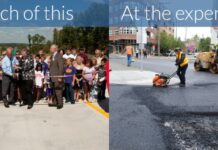In February, the 2025 Sustainable Transport Award was given to Dakar, Senegal, with an honorable mention for Mexico City, for their world-class bus rapid transit (BRT) systems. Many other cities will look to Dakar and Mexico City for inspiration as they aim to create high-quality, cost-efficient, and sustainable public transport. But inspiration alone is not enough. Advocates must overcome many challenges in their quest for better cities, such as the initial analysis of a BRT line’s potential impacts. This kind of “scoping” requires some technical expertise, but often, nobody is willing to fund a custom analysis. Without initial studies, building momentum for investment in BRT could be impossible.
That’s where ITDP’s new BRT SCOPE (Simple Calculator of Project Effects) web tool comes in. Previously, an initial BRT analysis might have required an expert and taken days to complete. Now, anyone can get ridership, climate, and air quality predictions in about 20 minutes in a web browser. The BRT SCOPE includes features to make it easy to compare and share your results, and is also available in Spanish and Portuguese. The Excel version allows further customization if you need to get more hands-on with the analysis. Let’s see how the web tool works, step by step.
The post Exploring the Possibilities of BRT with ITDP’s SCOPE Web Tool first appeared on Institute for Transportation and Development Policy.









